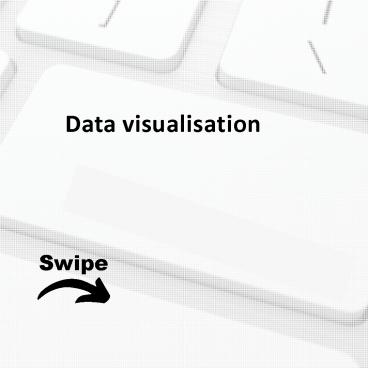Data visualisation - PowerPoint PPT Presentation
Title:
Data visualisation
Description:
This presentation will educate you about data visualisation and why it is important, popular techniques and benefits of data visualisation. For more topics stay tuned with Learnbay – PowerPoint PPT presentation
Number of Views:92
Title: Data visualisation
1
Data visualisation
Swipe
2
Data visualisation
Data visualisation is the process of
converting information into a visual
representation, such as a map or graph, in order
to make data easier to comprehend and extract
insights from. Information graphics, information
visualisation, and statistical graphics are all
terms that are frequently used interchangeably.
3
Data visualisation
- Data visualisation is one of the processes in the
data science process, according to which data
must be visualised after it has been collected,
processed, and modelled in order to draw
conclusions.
4
Why is data visualisation important?
Data visualisation provides a quick and effective
way to communicate information in a universal
manner using visual information. The practice
can also help businesses identify which factors
affect customer behavior pinpoint areas that
need to be improved or need more attention make
data more memorable for stakeholders understand
when and where to place specific products and
predict sales volumes.
5
Benefits of data visualisation
The ability to absorb information quickly,
improve insights and make faster decisions. An
increased understanding of the next steps that
must be taken to improve the organization. An
improved ability to maintain the audience's
interest with information they can understand.
6
An easy distribution of information that
increases the opportunity to share insights with
everyone involved. Eliminate the need for data
scientists since data is more accessible and
understandable. An increased ability to act on
findings quickly and, therefore, achieve success
with greater speed and less mistakes.
7
Examples of data visualisation
- In the early days of visualization, the most
common visualization technique was using a
Microsoft Excel spreadsheet to transform the
information into a table, bar graph or pie
chart. While these - visualization methods are still commonly used,
more intricate techniques are now available,
including the following - infographics bubble clouds bullet graphs heat
maps fever charts - time series charts
8
Some other popular techniques are as follows.
Line charts. Area charts. Scatter plots.
Treemaps. Population pyramids.
9
Topics for next Post
Classification and regression trees
(CART) Neural Networks Big data Stay Tuned with

